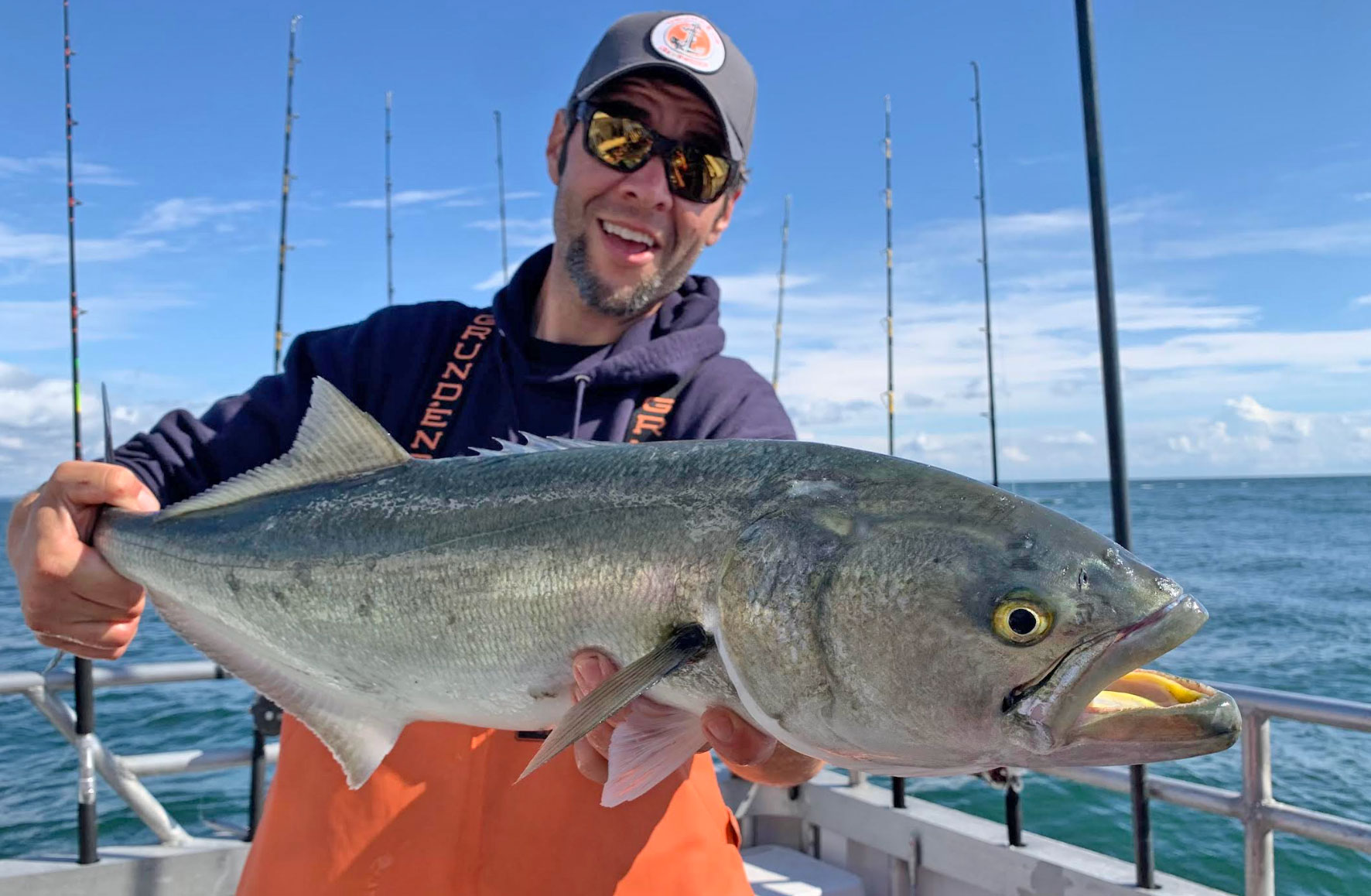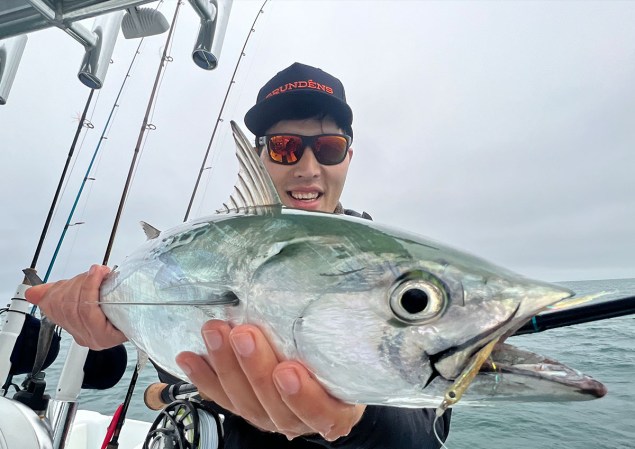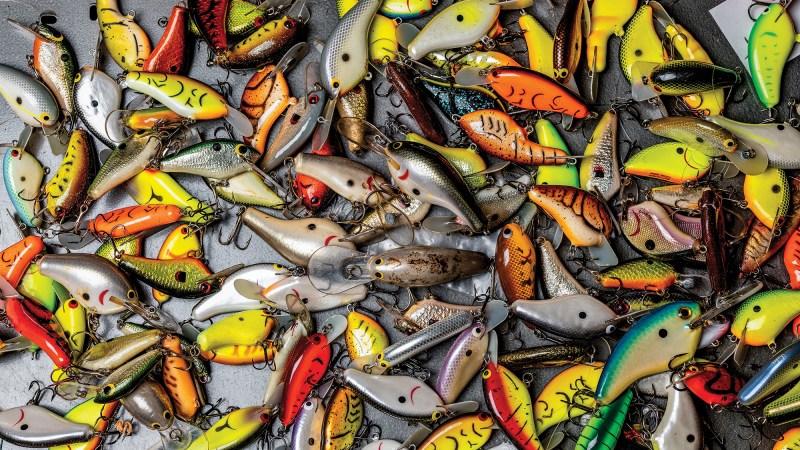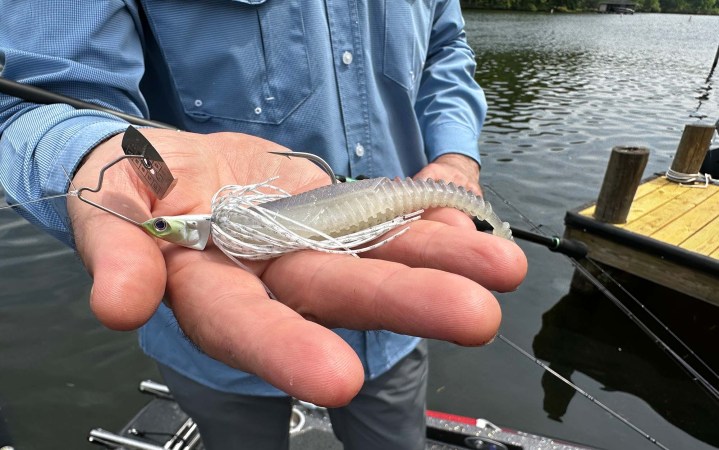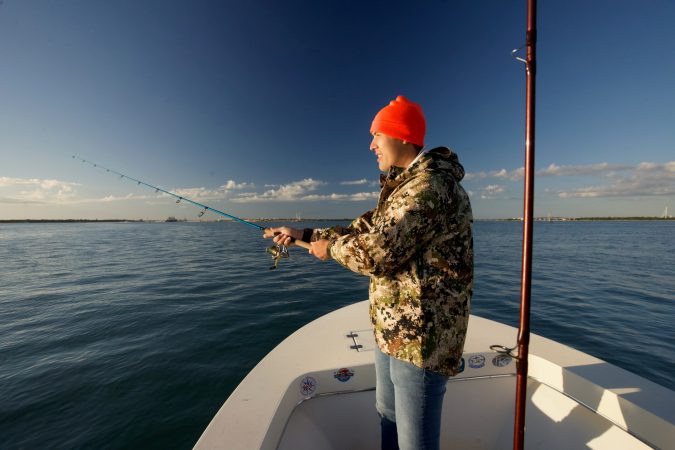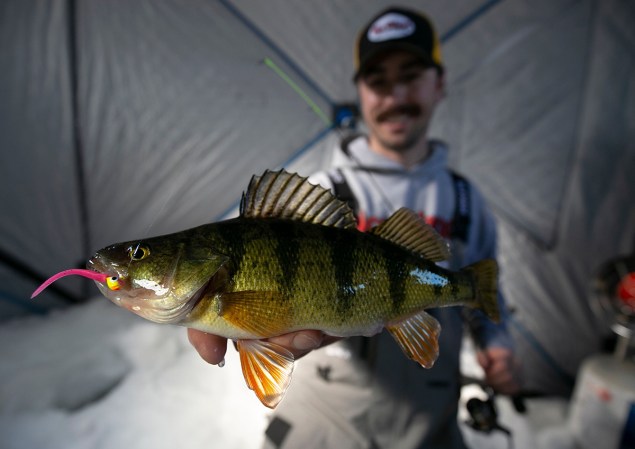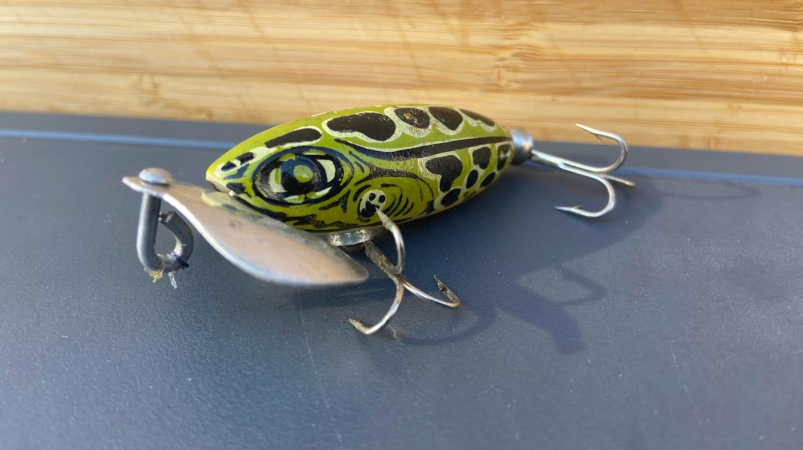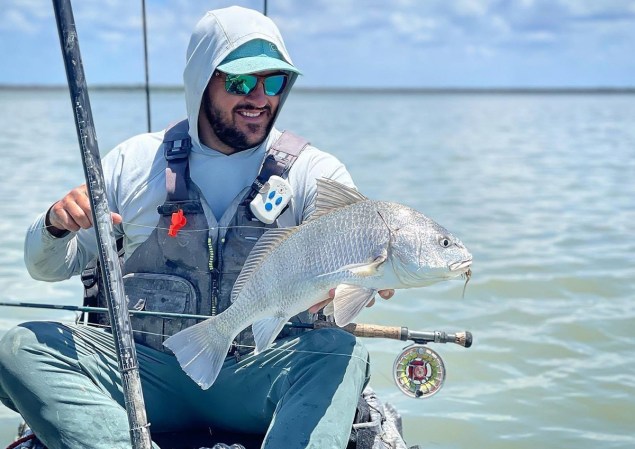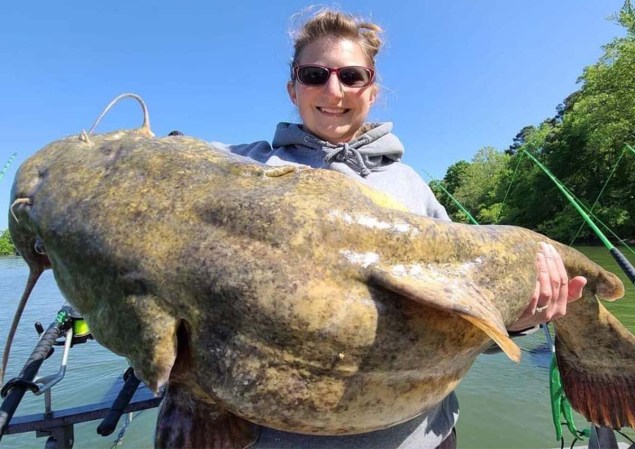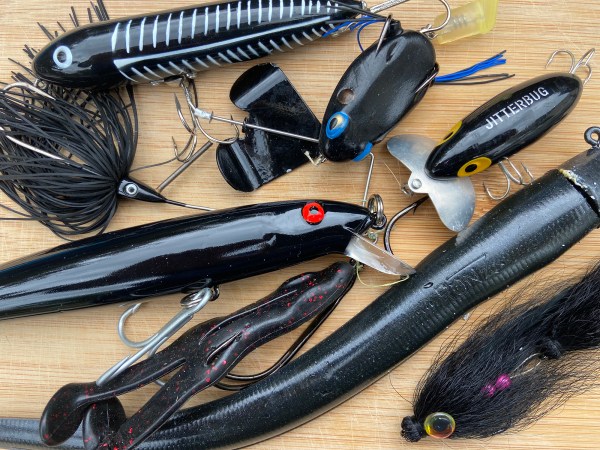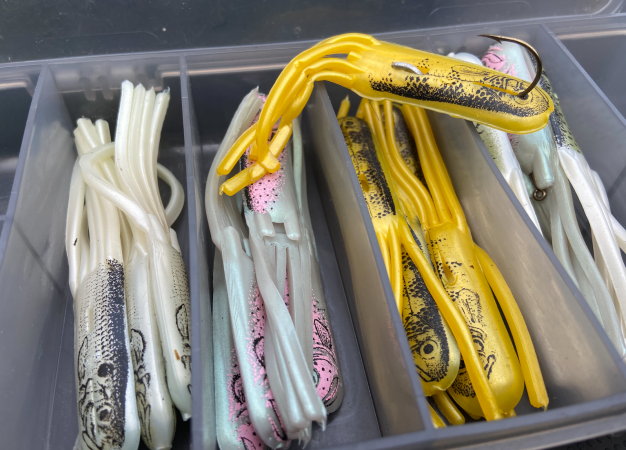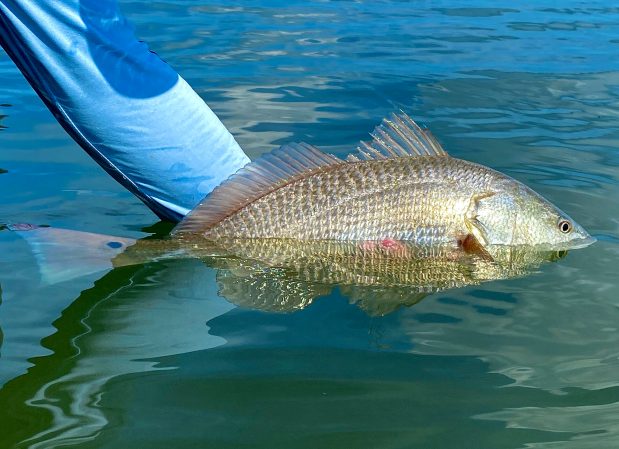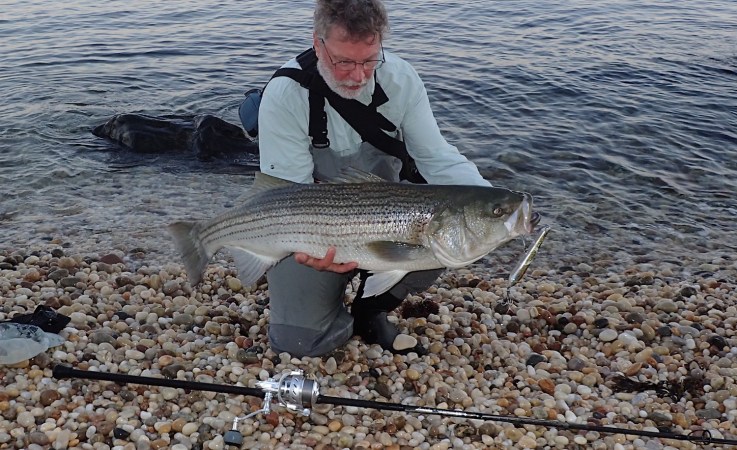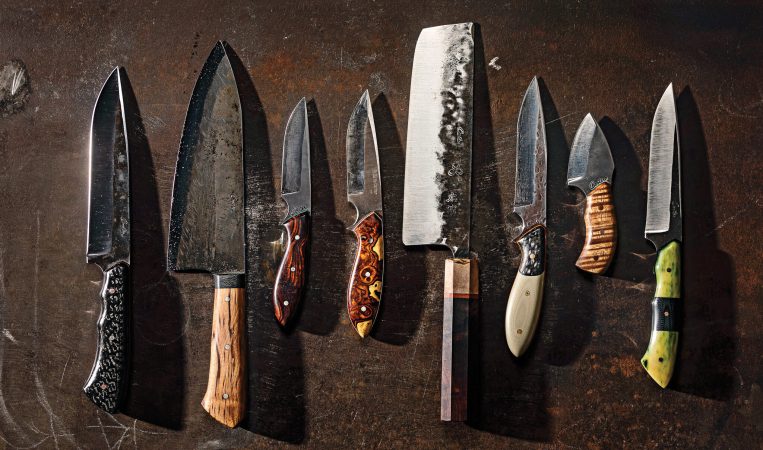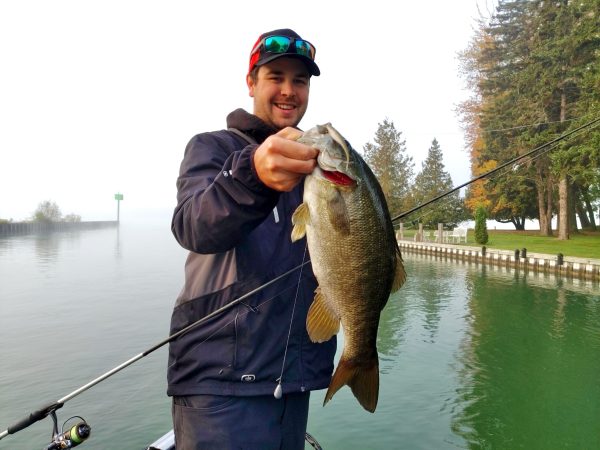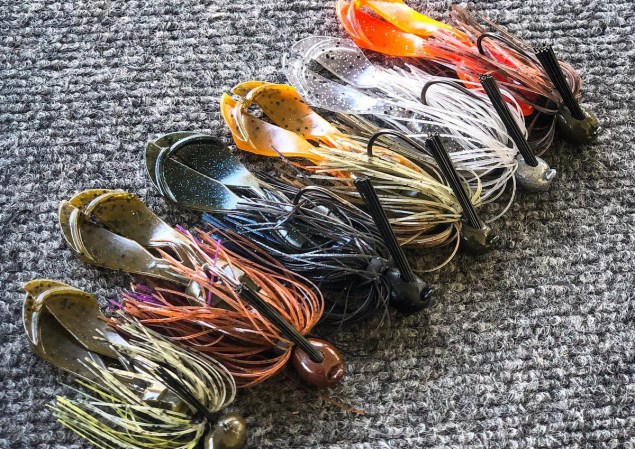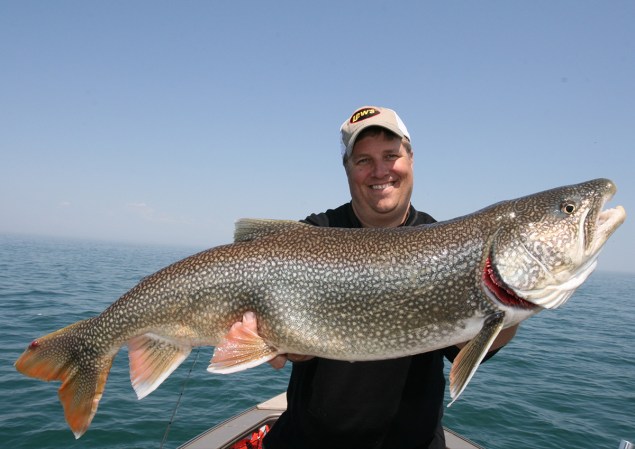We may earn revenue from the products available on this page and participate in affiliate programs. Learn More ›
Bluefish are odd oddities. Misfits, if you will, in the pantheon of saltwater fish. They exist in every temperate and tropical ocean, bay, and estuary on the planet, yet they create little fanfare outside of the United States. They are the only member of the Pomatomidae family, so they have no relatives. In Australia and New Zealand, they’re called “tailors.” In Africa they’re known as “shad” or “elves.” In every corner of the globe where bluefish roam, you’ll find them in fish markets. In fact, they’re more coveted on the table in regions like the the Mediterranean and South Africa where consumers gravitate toward “fishy” fish. But commercial value aside, nobody puts more emphasis on targeting bluefish recreationally than American anglers, particularly those living on the Atlantic Coast from Maine to Florida. However, even here they’re overshadowed by more glamorous targets like striped bass, redfish, and snook.
That’s a shame, because the real benefit of chasing blues is that they don’t require nearly the skill and arsenal of lures you often need to fool the A-listers. Bluefish are unique in that they’re available to everyone regardless of budget. You can catch them as successfully from a back-bay dock as you can 40 miles offshore.
So, let’s breakdown everything you need to know about how to catch bluefish. Along the way, we’ll bust and confirm a few myths, and even help you get over the widespread notion that bluefish aren’t fit for dinner.
How to Find Bluefish
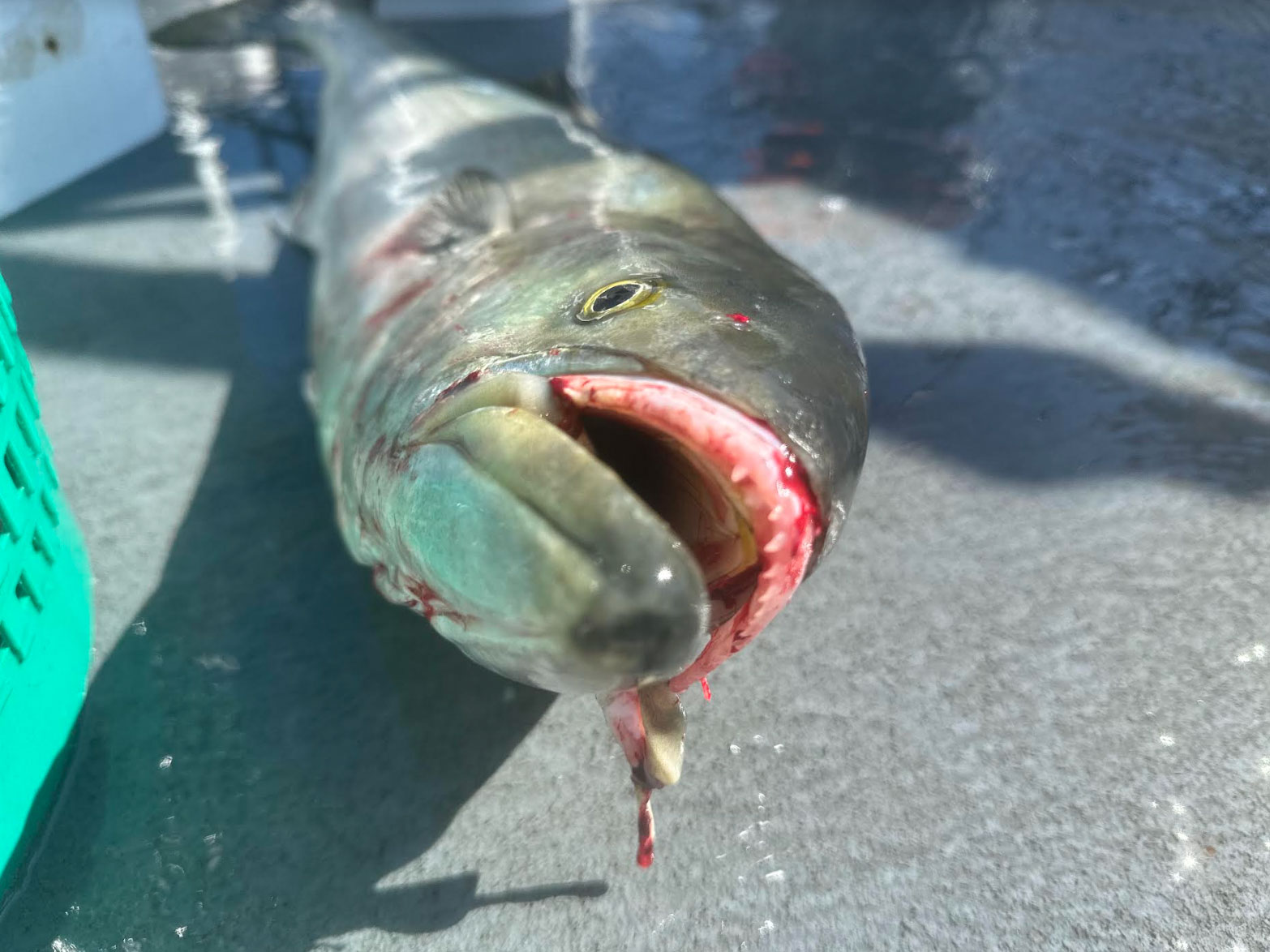
Bluefish are considered pelagic fish, meaning they thrive in the open ocean far from land. However, unlike pelagic species such as tuna and marlin, bluefish spend a lot of their time close to shore, which allows them to be classified as inshore fish as well. Bluefish spawn in bays and estuaries, and they’ll often stick around or hang out just off the oceanfront beaches if the food supply is good. Bluefish also migrate seasonally, with many areas of the northern Atlantic Coast experiencing a spring and fall run, though bluefish can be found throughout the summer in these areas as well. The Mid-Atlantic and Florida, conversely, see a spike in large bluefish during the winter months. In every stage of development, bluefish are prime targets. Here’s where to find them.
Snapper Blues: 0 to ½-pound
Juvenile bluefish are great targets for kids and adults alike when chased with light stream-trout-caliber tackle. Throughout much of their range, fish from the spring spawn reach a “catchable” size by mid- to late-summer. You can find them feeding in bays around docks, bulkheads, piers, and sod banks until the fall cool-down sends them out the closest inlet to the open ocean.
Taylor Blues: 1 to 5 pounds
Taylor bluefish generally measure between 13 and 20 inches making them great light-tackle sportfish. Like snappers, Taylors spend a lot of time in back bays during the summer months, as well as along oceanfront beaches, inlets, and jetties.
Chopper Blues: 6 to 10 pounds
Chopper bluefish require a stepping up of tackle to medium-heavy gear, as they are significantly stronger than their younger relatives. The cooler months of spring and fall will bring these fish into sheltered waters to spawn and feed, though they spend most of their time a few miles offshore.
Slammer Blues: 11 to 15 pounds
The most likely time to encounter slammer blues with your feet on dry land is during the spring and fall migrations in the Northeast, and during the winter months in the Mid-Atlantic and South. During the summer months, fish in this size class gravitate to reefs and wrecks offshore. Regardless of where you find them, a stout rod and reel with a solid drag are required.
Gator Blues: Greater than 15 pounds
Sadly, true gators are getting harder to come by throughout much of the bluefish’s range because of altered migration patterns, environmental shifts, and overfishing. However, they do still exist, and while it’s possible to hook one in the surf or bay, the odds are significantly better offshore.
Gearing Up for Bluefish
Regardless of size, bluefish fight very hard. They’re tenacious and don’t give up, so even if you’re targeting small ones, make sure your reel has a reliable drag. There are, however, more pieces of kit that apply across the entire size range of these extremely toothy fish. Here’s what you need to catch bluefish.
Long Shank Hooks
Whether you’re fishing a minnow under a bobber for snappers or drifting a fat chunk of mackerel offshore, long shank hooks are beneficial. Smaller blues have smaller mouths, so with fish weighing less than approximately 3 pounds, the long shank of your hook often suffices as protection from their razor-sharp teeth when employing natural bait.
Steel Leader
Once you start getting into bluefish weighing north of 5 pounds, steel leader becomes necessary when using baits or lures small enough for the fish to completely swallow. You can add steel leader to the end of your line by learning the haywire twist, or purchase pre-made steel leaders that come with a swivel at one end and a clip at the other.
Read Next: Best Saltwater Rods
Metal Lures
Make no mistake, bluefish will hit just about any kind of lure ever made. The problem is that if you’re firing a soft-plastic or bucktail, you’re going to get one fish per lure because their teeth will shred those materials in a split second. For this reason, metal lures like the KastMaster, Diamond Jig, and Deadly Dick are indispensable if blues are around. You can find tiny models for snappers or giant versions for gators. They work from the beach, or a boat, and those nasty teeth can’t do very much damage to them.
Inline Single Hooks
Lures like plastic plugs and poppers are top choices for bluefish, and most of them can withstand their teeth and jaw pressure. However, the majority of them also come equipped with one or more treble hooks. They do a heck of job sticking the fish, but they can be a nightmare after you land your catch. Bluefish are notorious thrashers. Their gums also excrete an anticoagulant, so if you do get bitten, you’re going to bleed. Even if you avoid the teeth, another bad scenario is having a writhing blue put a treble hook in your hand while it’s still connected to its face. To avoid these grizzly encounters, many anglers swap treble hooks for inline single hooks when targeting bluefish. It makes unhooking them easier and reduces the odds of needing stitches.
Read Next: Best Saltwater Reels
How Bluefish Feed

Blues are schooling fish that hunt in wolf packs regardless of their size. Even if you only catch one, rest assured at the exact moment when you connected, there were more of them close by. One reason why they’re such popular targets, of course, is because they’re so competitive that you can get them worked into a frenzy. This is not as easy with artificial lures, as you might entice one or two from a passing school that moves on quickly. When using natural, oil-rich baits like menhaden, mackerel, or spearing, however, the scent alone can draw in an entire school, and if you keep feeding them, they’ll stick around. Therefore, party boats that target bluefish offshore often chum heavily to keep the blues close.
The appetite and aggression of bluefish is nothing short of legendary. They have been documented attacking a school of baitfish until they’re literally so stuffed their stomachs are bulging, only to regurgitate everything they just ate so they can continue to feed.
When casting or jigging lures, don’t be afraid to retrieve faster than you think you need to because bluefish have keen eyesight and are often triggered by the illusion of a meal attempting to make a quick escape. If throwing a topwater lure, chug it violently to make it throw plenty of water, which can get the attention of any bluefish in the area very quickly.
Can You Eat Bluefish?
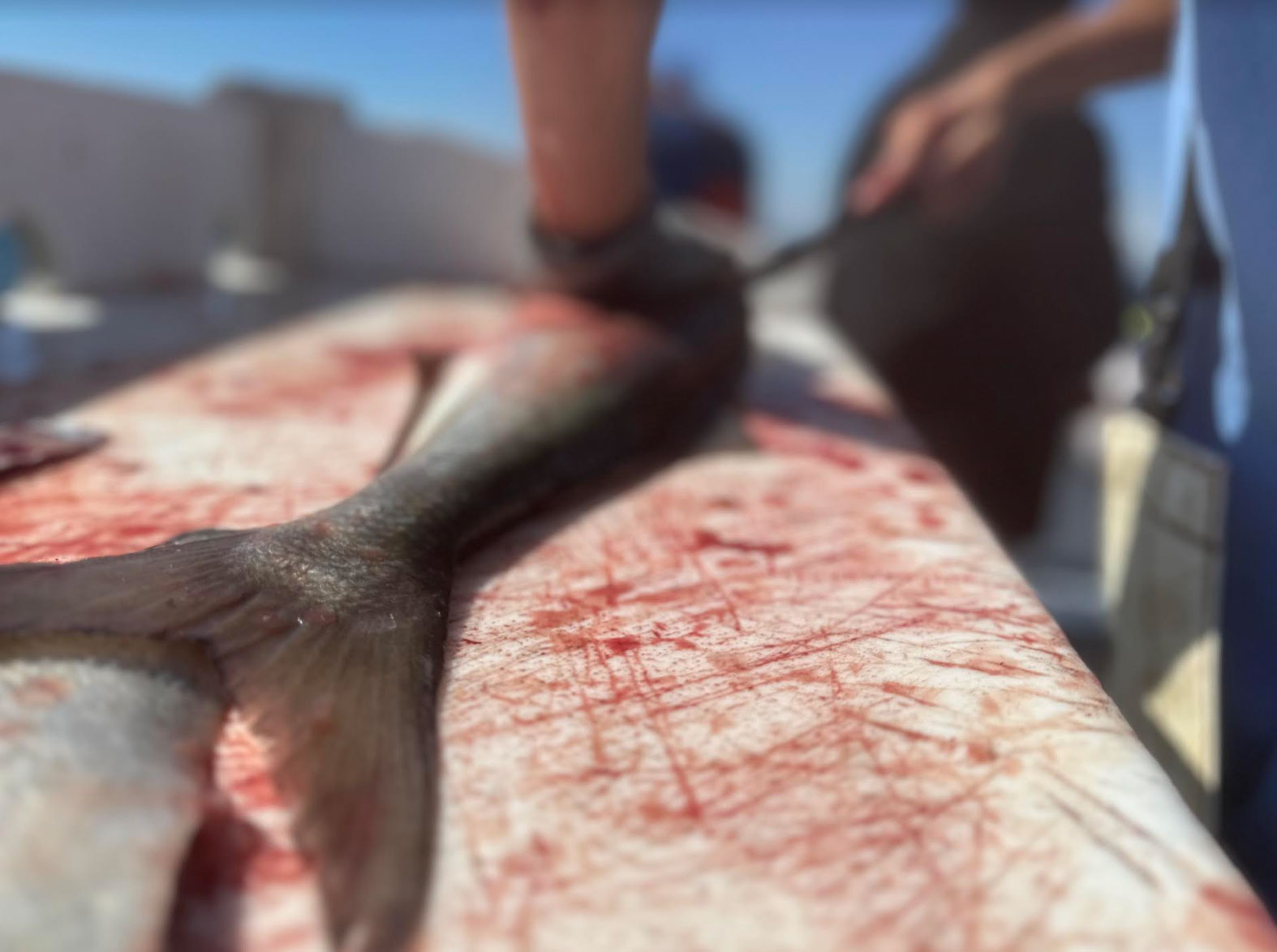
Not many U.S. anglers will argue that bluefish aren’t fun to catch. Whether or not they’re good to eat, on the other hand, is hotly debated and a matter of personal taste. In my opinion, bluefish make great table fare, that is if you know which ones to eat.
Bluefish are very oily and strong-flavored. As they age, they develop a bloodline so thick that it spans almost the entire outside of their fillets. Bluefish also doesn’t freeze well, and even when fresh, without proper care the meat will become mushy very fast.
If I’m eating a bluefish, it’s going to weigh between one and five pounds. The smaller the fish the less developed its bloodline and, therefore, the milder its flavor. A bluefish in that size range cooked shortly after capture is fantastic and can be prepared with any preparation you’d use for any other white-meat saltwater fish.
Bleed Bluefish
No matter what size blue you’ve landed, if you intend to eat it, you need to bleed it as soon as possible by ripping out or slicing its gills. Ideally, you’ll be able to keep the fish in a livewell, bucket, or even on rope so it’s submerged in saltwater as the blood drains. Once it’s released all its blood, you want to pack it in ice as soon as possible. Keep it cold until it’s ready to fillet, and as soon as you’ve removed the meat, get the fillets back on ice. Try to avoid letting the meat contact freshwater, as it will cause it to soften even more quickly. The objective is to keep the meat as cold as possible until you’re ready to start cooking.
With larger, thicker fillets, it’s worth taking the time to remove as much of the bloodline as possible, which can be done by running your knife shallow along the bottom of the fillet like how you’d remove the skin from a fillet. The cheeks of big bluefish also should not be overlooked, as they lack the fishy flavor of the rest of the meat and are considered the choicest bite of the entire fish by many bluefish fans.
How to Cook Bluefish
I was recently on a party boat targeting bluefish off the coast of Connecticut. We had a banner day, and many of the fish weighed ten pounds or better. I kept only a couple, giving the rest away to anyone that wanted them. The gentleman next to me, however, filled his cooler to the brim. He later informed me that this was his first time bluefishing and asked for recipe recommendations. I offered the following two. While there are countless recipes, I believe these do justice to larger bluefish and are perfect for those that have yet to sample their flavor.
Buttermilk Bluefish Nuggets
In my opinion, small bites are better than a plateful when dealing with a fish that’s an acquired taste. Bluefish—big ones in particular—also benefit from a creamy, acidic accoutrements. These nuggets are so good that even my picky kids enjoy them.
Ingredients
- Bluefish fillets, bloodline removed
- Buttermilk
- Panko breadcrumbs
- Old Bay seasoning
- 1/2 lemon
- ¼ cup mayonnaise
- ¼ cup sour cream
- Fresh garlic
- Hot sauce
- Peanut or canola oil
Cut the bluefish fillets into 2-inch chunks and sprinkle them liberally with Old Bay seasoning. Place them in a zip-seal bag and cover them with buttermilk. Allow them to marinate in the refrigerator for at least an hour.
Fill a second zip-seal bag with breadcrumbs. Remove the bluefish chunks and place them in the bag of breadcrumbs. Shake the bag to coat the chunks thoroughly.
Deep fry the chunks in peanut or canola oil until golden brown.
To make the dipping sauce, mix the mayonnaise and sour cream with hot sauce to taste, 2 or 3 bulbs of crushed garlic, and the juice from half a lemon.
Smoked Bluefish Dip
While the jury is out on fresh-cooked bluefish for many people, smoked bluefish is outstanding. In this preparation, its oil content is beneficial. You can certainly munch on smoked bluefish as a snack, but it’s elevated in my opinion when incorporated into a classic fish dip.
Ingredients
- Bluefish fillets
- ½ cup Kosher salt
- ½ cup brown sugar
- Your favorite barbecue seasoning
- 1 lemon
- 2 bricks of cream cheese
- ¼ cup Worcestershire sauce
- 1 bunch of dill
- Hot sauce
Mix the salt and sugar into two quarts of warm water. Stir until it dissolves. Place the fillets in the brine and let them soak overnight in the refrigerator.
In the morning, remove and rinse the fillets. Allow them to air dry for at least an hour.
Sprinkle the fillets with barbecue seasoning and smoke at 180 to 200 degrees for approximately 4 hours (or until tight and dry to the touch on the outside)
Pulse the fillets in a food processor until thoroughly chopped.
In a large mixing bowl, add chopped fish, two bricks of softened cream cheese, Worcestershire sauce, hot sauce to taste, the juice of one lemon, and finely chopped dill to taste. Mix everything together well.
Although the dip is ready to eat now, it’s better if you let it sit in the refrigerator for a day or two so the flavors can really incorporate.
Final Thoughts on Bluefish
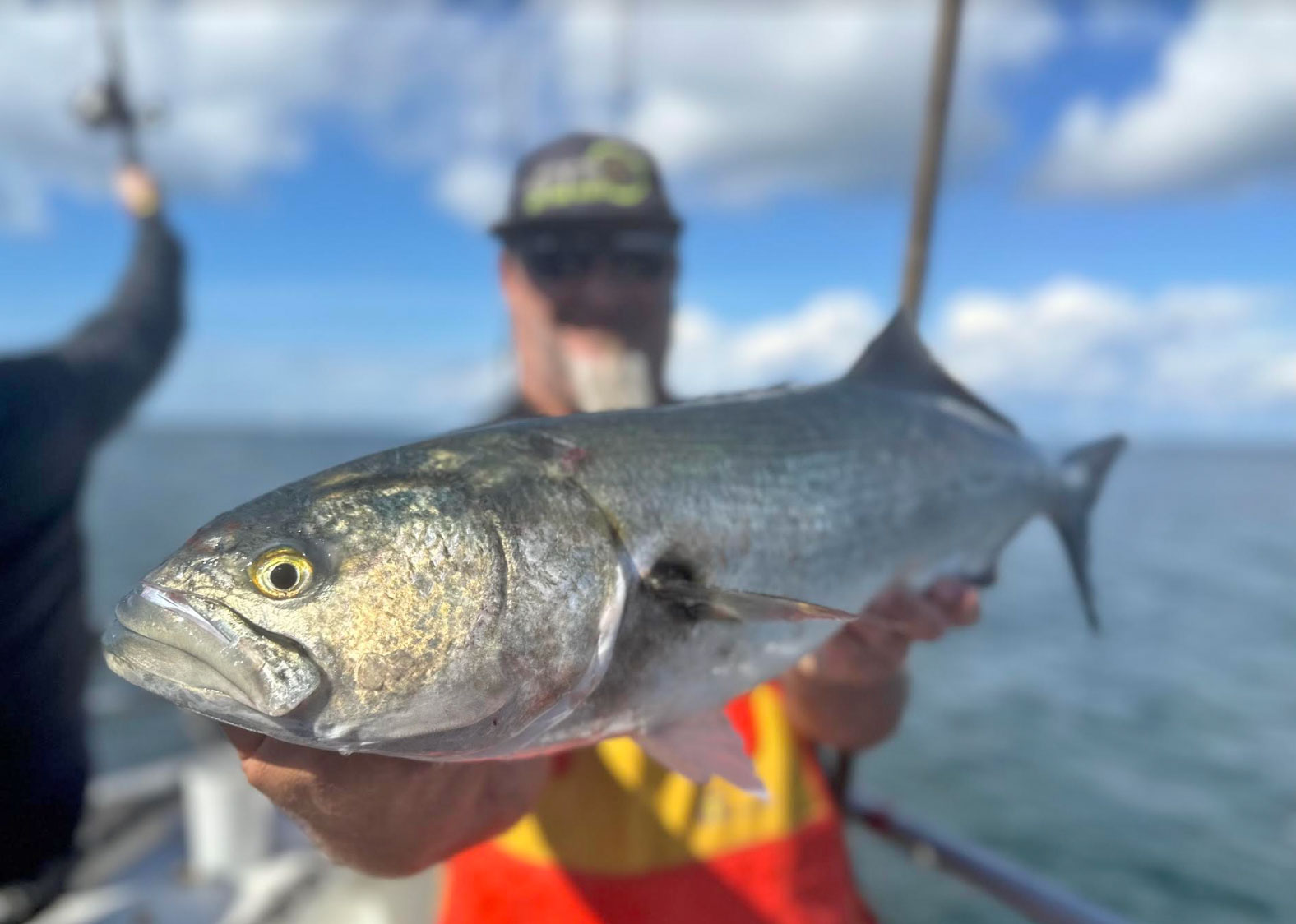
Because of their behavior and feeding habits, there’s not much guesswork regarding what to tie on the end of your line when targeting bluefish. And that’s partly what makes them so fun. No matter your age and strength, there’s the perfect sized bluefish for you. An outing can be akin to chasing panfish on a pond or you can walk away with sore shoulders if you chase the bigger blues. Throw the biggest ones back and keep a few of the smaller bluefish for the fryer.

